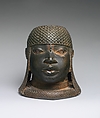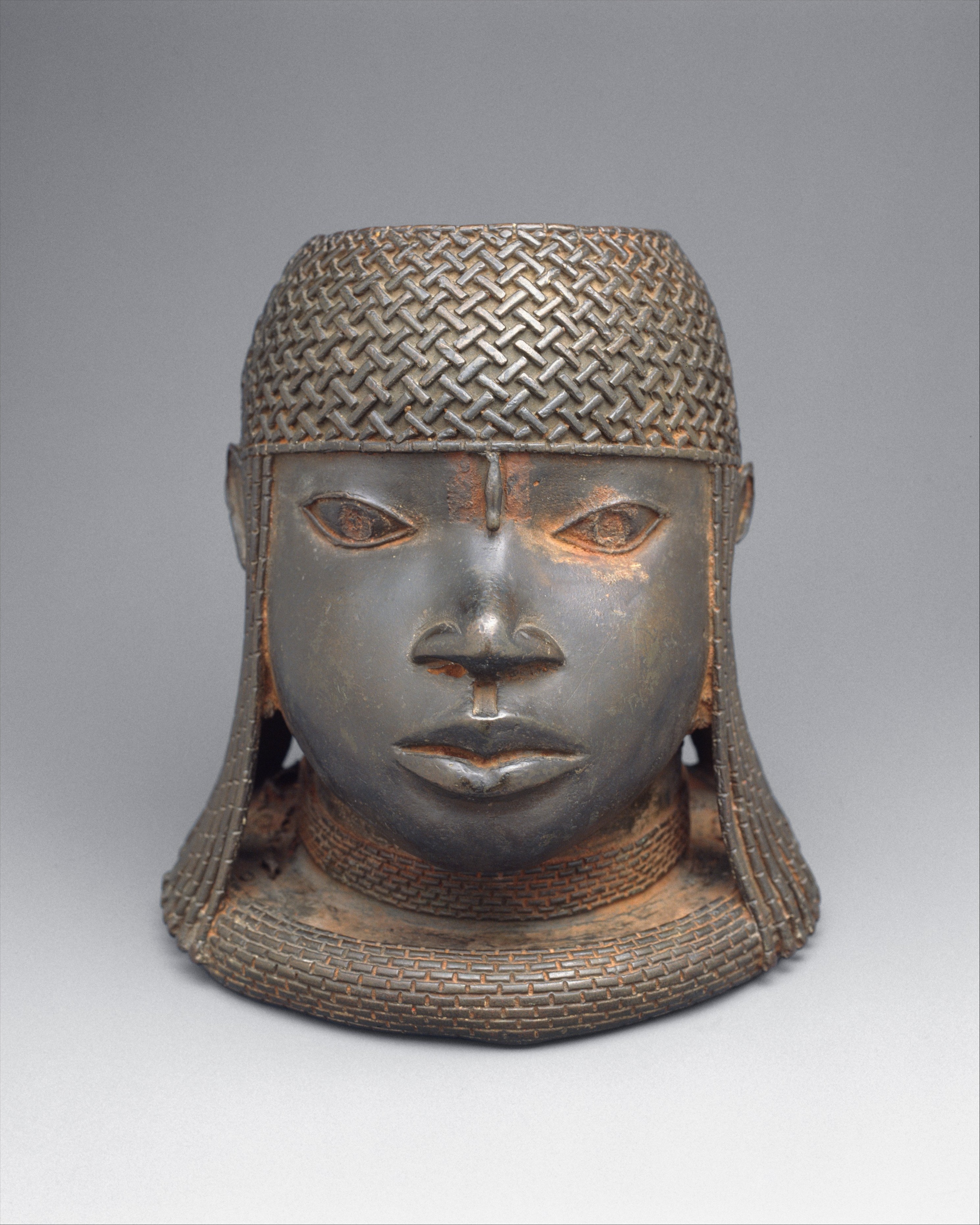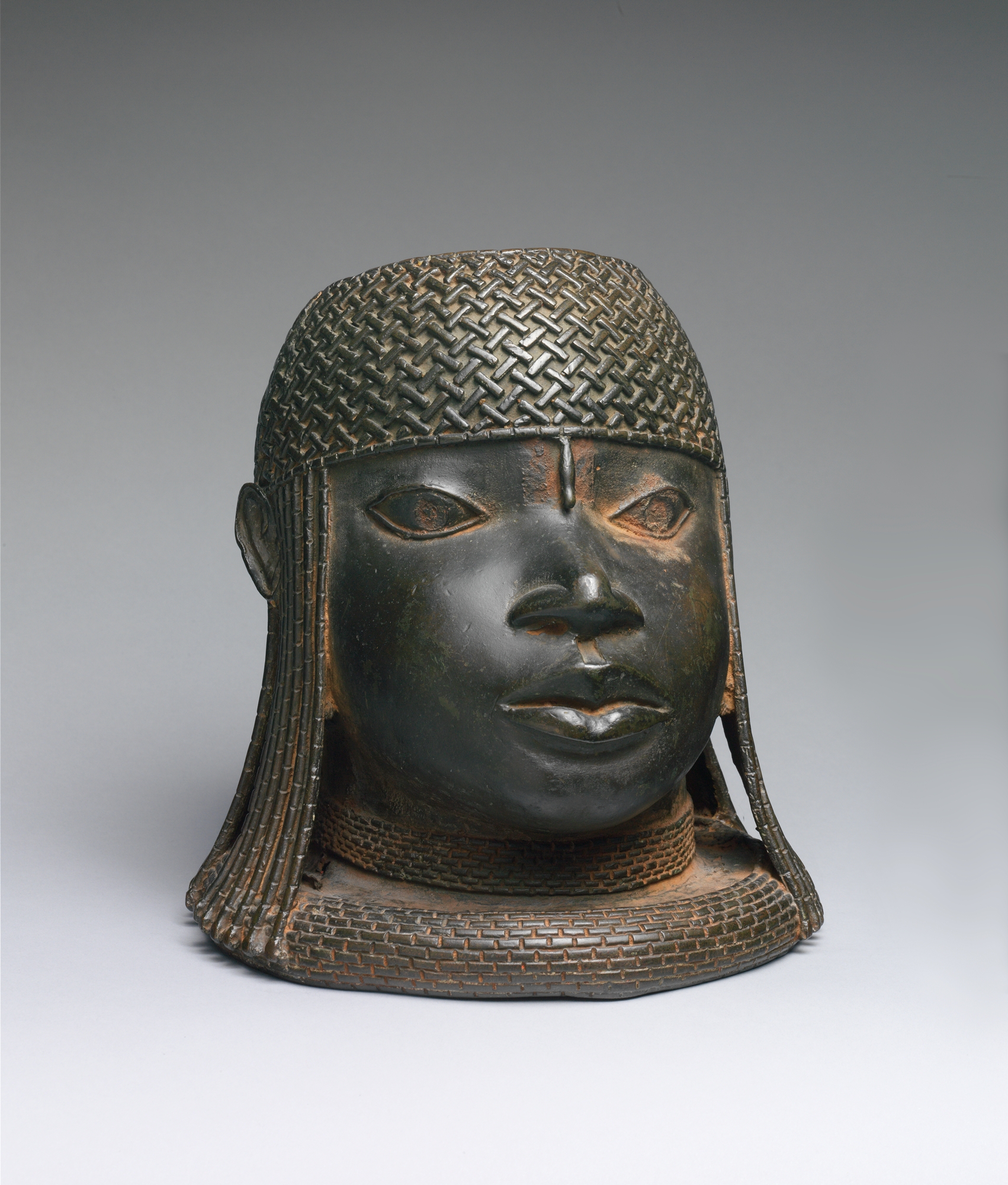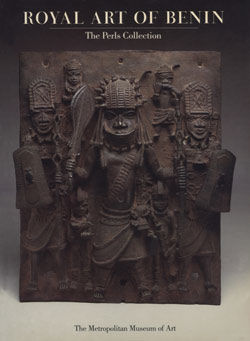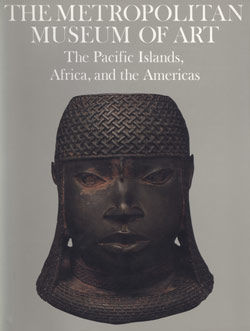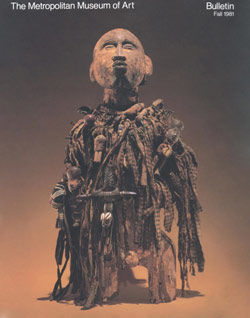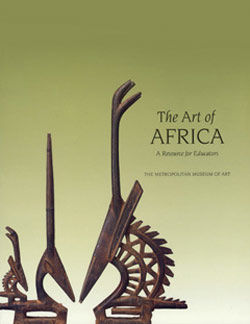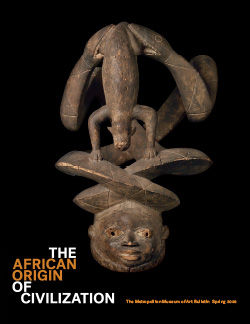Head of an Oba
This commemorative cast-brass sculpture depicts the idealized likeness of an oba, or king, wearing a woven cap of coral beads, with lateral strands of coral suspended around both ears. A single bead extends from the headdress to the forehead, aligned with the ridge of the nose, creating bilateral symmetry. The youthful face is round and rendered with precise naturalism. A rolled collar is worn low on the neck and is characteristic of imagery associated with Benin rulers. A circular opening at the summit of the head would have accommodated a carved elephant tusk. This sculpture would have held a place of honor on an altar in the palace of the kingdom of Benin (in present-day Nigeria), during the early half of the sixteenth century.
The obas of Benin trace their origins to a ruling dynasty that began in the fourteenth century. The title of oba is passed on to the firstborn son at the time of the ruler’s death. The first obligation of the new king was to create a shrine, dedicated to his predecessor and serving as the site at which the living monarch communicated with his ancestor or father. Ensuring dynastic continuity, the shrine held various carved and cast artifacts, including freestanding brass heads such as this one. The head acted as a vessel through which the late king transferred his power to the new king, the latter accepting the responsibility for successfully directing and defining his life. The Edo people considered the head to be the locus of a man’s character, knowledge, authority, success, and family leadership. These sculptural heads were a consistent visual point of reference from ruler to ruler, reinforcing the idea of familial succession across a single dynasty. The oba is often called by his praise name “Great Head,” emphasizing the head of the living leader as the center of responsibility for the kingdom. Brass heads of the first half of the sixteenth century, such as this one, are distinguished by their naturalism and by the thin walls of their brass casting. The relatively minimal amount of brass used to make this light cast and the proportionately small amount of regalia depicted indicated that the head was created early on. Art historians have suggested that over the centuries, as greater quantities of brass became available, casters had less incentive to be economical with the material, and the trappings of office worn by the kings of Benin became more ostentatious.
This genre of commemorative portraiture is highly stylized and does not portray recognizable facial features, but rather renders the deceased king at the prime of his life. The focus is on the regalia and materials of kingship: both brass and coral were items of wealth obtained by Benin’s leadership from Europe through the coastal trade. Coral is of particular significance to the Edo as a metaphor for the ancestral realm of the sea. The use of brass for commemorative heads dates to the fifteenth century, as a way for the Oranmiyan Dynasty rules to distinguish themselves from the previous dynasty of rules. During this time, artists of Benin in dialogue with their patrons developed a sculptural program for commemoration in which the depiction of the oba went from representational to idealization, reinforcing the continuity of the dynasty and its identification with a consistent ideal of leadership. Even today, the Edo value brass for its red color and shiny surface, which make it both beautiful and frightening, properties befitting the images of divine monarchs. Beyond aesthetic qualities, the use of brass conferred on the works a sense of permanence and imbued them with the potential to deflect evil.
Bibliography
Barley, Nigel. The Art of Benin. The British Museum Press: London, 2010.
Dark, Phillip. An Illustrated Catalogue of Benin Art. G.K. Hall & co: Boston, 1982. Illus. 31
Ezra, Kate. Royal Art of Benin: The Perls Collection in the Metropolitan Museum of Art. The Metropolitan Museum of Art: New York, 1992.
LaGamma, Alisa. Heroic Africans: Legendary Leaders, Iconic Sculptures. The Metropolitan Museum of Art: New York, 2012.
Plankensteiner, Barbara (ed.). Benin Kings and Rituals: Court Arts from Nigeria. The Art Institute of Chicago: Chicago, 2007.
Due to rights restrictions, this image cannot be enlarged, viewed at full screen, or downloaded.
This artwork is meant to be viewed from right to left. Scroll left to view more.
